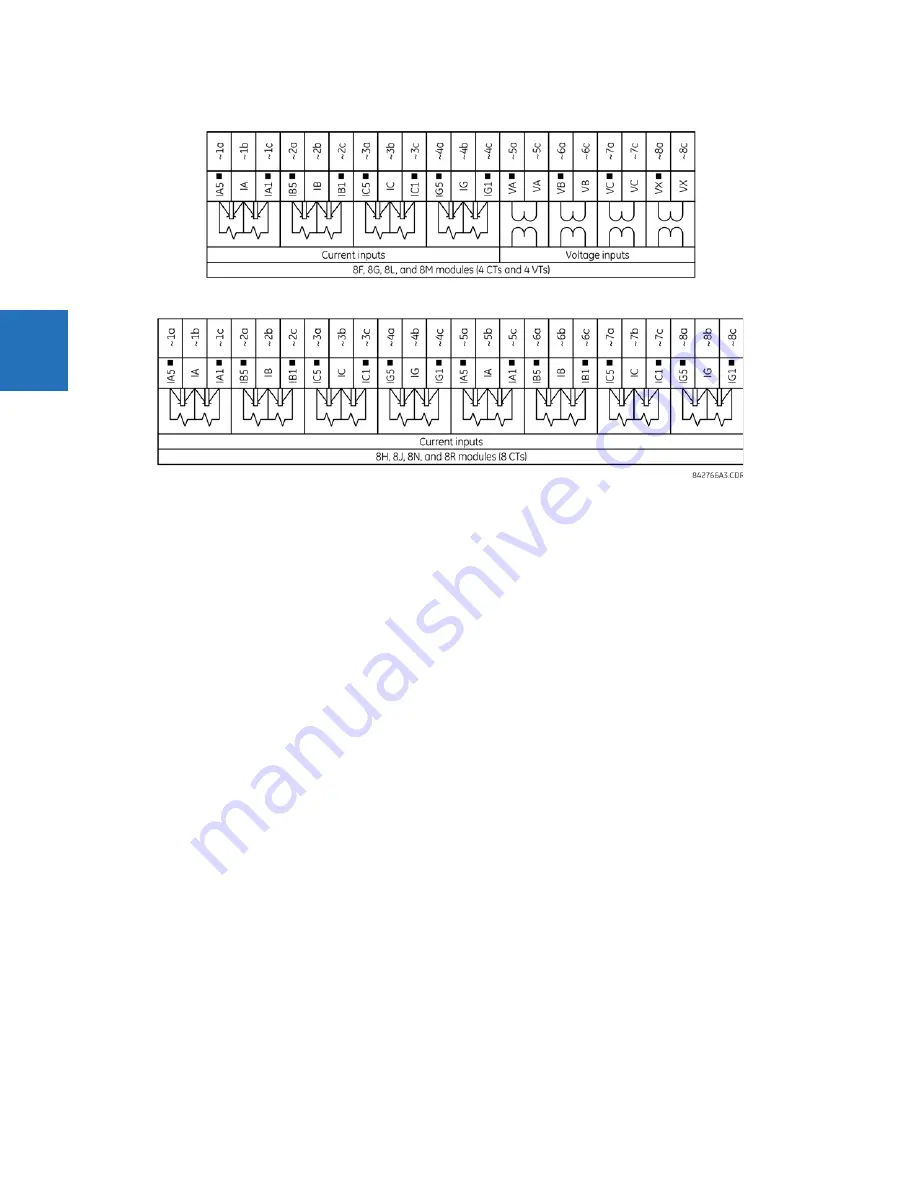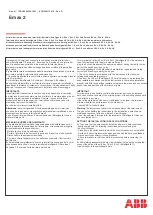
3-18
B30 BUS DIFFERENTIAL SYSTEM – INSTRUCTION MANUAL
WIRING
CHAPTER 3: INSTALLATION
3
Figure 3-17: CT/VT module wiring
3.3.5 Process bus modules
The B30 can be ordered with a process bus interface module. The module interfaces with the HardFiber Process Bus
System, or HardFiber Brick, allowing bidirectional IEC 61850 fiber-optic communications with up to eight HardFiber Bricks.
The HardFiber system integrates seamlessly with the existing UR-series applications, including protection functions,
FlexLogic, metering, and communications.
This process bus system offers the following benefits:
•
Reduces labor associated with design, installation, and testing of protection and control applications using the UR by
reducing the number of individual copper terminations
•
Integrates seamlessly with existing UR applications, since the IEC 61850 process bus interface module replaces the
traditional CT/VT modules
•
Communicates using open standard IEC 61850 messaging
For details on the HardFiber system, see its Instruction Manual.
3.3.6 Contact inputs and outputs
Nearly all contact input/output modules have 24 terminal connections. The connections are arranged typically as three
terminals per row, with eight rows in total. A given row of three terminals can be used for the outputs of one relay. For
example, for form-C relay outputs, the terminals connect to the normally open (NO), normally closed (NC), and common
contacts of the relay. For a form-A output, there are options of using current or voltage detection for feature supervision,
depending on the module ordered. The terminal configuration for contact inputs is different for the two applications.
The contact inputs are grouped with a common return. The input/output modules have three versions of grouping: four
inputs per common return, five inputs per common return on a high-density module, and two inputs per common return.
When a contact input/output module is ordered, four inputs per common is used. If the inputs must be isolated per row,
then two inputs per common return are selected (4D module). If the space limitation in the relay requires use of a high-
density input module (6W), five inputs share one common return and the module has six banks of inputs.
The tables and diagrams that follow illustrate the module types (6A and so on) and contact arrangements that can be
ordered for the relay. Since an entire row is used for a single contact output, the name is assigned using the module slot
position and row number. However, since there are two contact inputs per row, these names are assigned by module slot
position, row number, and column position.
Summary of Contents for b30
Page 10: ...x B30 BUS DIFFERENTIAL SYSTEM INSTRUCTION MANUAL TABLE OF CONTENTS ...
Page 486: ...5 278 B30 BUS DIFFERENTIAL SYSTEM INSTRUCTION MANUAL TESTING CHAPTER 5 SETTINGS 5 ...
Page 616: ...iv B30 BUS DIFFERENTIAL SYSTEM INSTRUCTION MANUAL ABBREVIATIONS ...
Page 632: ...xvi B30 BUS DIFFERENTIAL SYSTEM INSTRUCTION MANUAL INDEX ...
















































